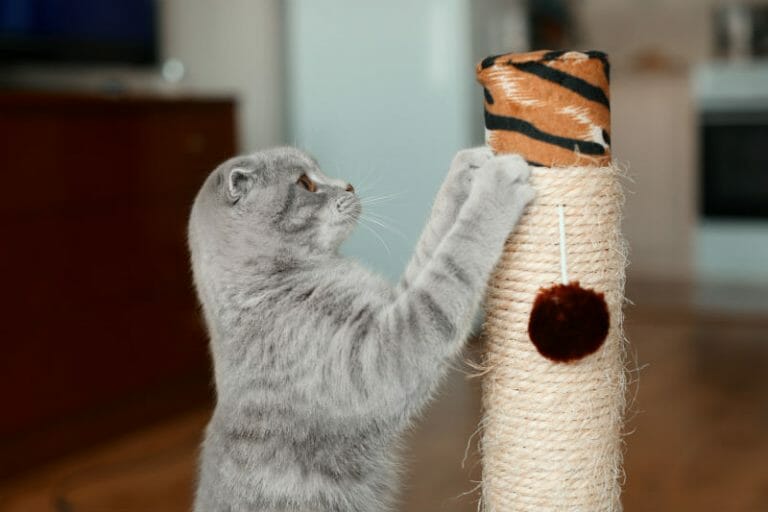What is declawing?
Declawing, also known as Onychectomy is the practice of removing the third bone of the fore and/or hind limb of a cat. Most commonly only the forelimbs will have the third bone removed.
Why do we declaw?
Declawing is done to eliminate unwanted scratching on undesirable surfaces, such as; furniture and carpets.
What is the purpose of cat claws and why do cats scratch?
The purpose of cat claws is for hunting, self-defence and to mark their territory both visually (scratching objects) and chemically, via pheromones. The claws on the forelimbs of cats are retractable, allowing them to expose or retract them as needed.
Scratching allows cats to:
- Dislodge old nail growth, exposing a new sharper claw underneath
- Stretch out their limbs after waking up from sleep
- Mark their territory, visually markers of their territory, as well as pheromones from their paw pads to communicate their presence of ownership.
Why is your cat scratching more?
Increase scratching can occur during times of anxiety and stress, including when your cat’s environment is being threatened or restricted. Anything in your cat’s life that is perceived as a threat to its territory can result in an increase in territorial marking.
Reasons for territorial marking:
- Presence of outdoor animals, particularly other cats, can be threatening to your cat’s territory.
- Frequent coming and goings of humans can also disrupt your cat’s environment.
- New furniture, discarding of old furniture, and renovations necessitate renewal and adjustment to territorial marking
- Inter-cat conflicts
What are the ideal scratching surface and ideal location for scratching surfaces?
Preference for scratching surfaces are influenced by the substrate and orientation (upright, horizontal or angled pads) of the surface and the location within the household. You should provide a wide variety of options in various areas around your home. Substrates that are available include; sisal rope, natural bark/wood, corrugated cardboard and carpet. Be sure to use a variety of the options listed above and make sure that you include options that extend above your cats stretched out height. Scratching surfaces should be located near windows, sleeping spots and in both busy and quiet areas of the household. You should place scratching surfaces near windows to allow your cat to see outdoors, which is visually stimulating and near sleeping areas, so once they wake, they are able to stretch and scratch after their nap. If your cat is scratching a piece of furniture that is undesirable, placement of a scratching surface directly adjacent to or attached to the piece of furniture should redirect the scratching to the new surface.
What are the alternatives to declawing?
- Perform regular nail trims on your cat
- Application of temporary synthetic nail caps
- Enticing your cat or kitten to scratch surfaces by using catnip, food treats or play
- Providing a variety of different types of scratching posts/pads around your home
- Try using Feliscratch by Feliway to redirect scratching, which uses pheromones and catnip.
To learn more, please visit: Cat-Friendly Homes
Written by: Lisa Schumacher, RVT




